- Lions in the Piazza
- Posts
- In the Land of Stripes
In the Land of Stripes
Welcome!
We’ve just returned from a trip to Italy, where we celebrated our amazing mother’s 80th birthday. It was a chance to revisit some favorite haunts as well as explore new places. As you’ve likely heard (or seen for yourself), Italy has been absurdly crowded this year – and yet in many spots peace can be found just around the corner.
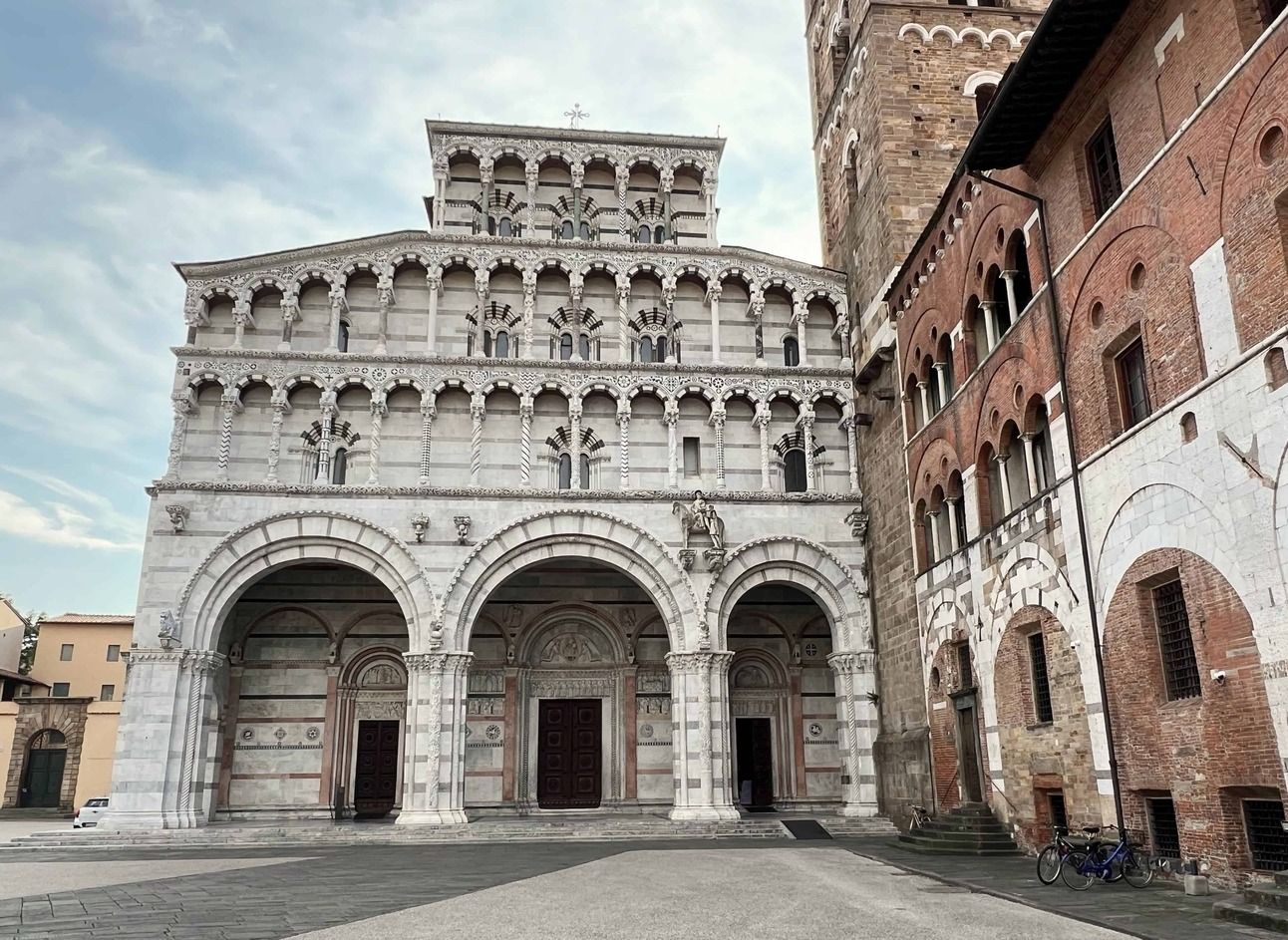
Stripes, Stripes, Stripes
Some of you may have noticed we have a penchant for stripes. (See our articles on the Striped Churches of Siena and Orvieto and Verona: Architecture of the Striped City.) Medieval Italian buildings feature stripes extensively and sometimes wildly, and a few years ago we became obsessed with figuring out why. Although we may never fully unravel the mystery, the quest has inspired travels both within and outside Italy.
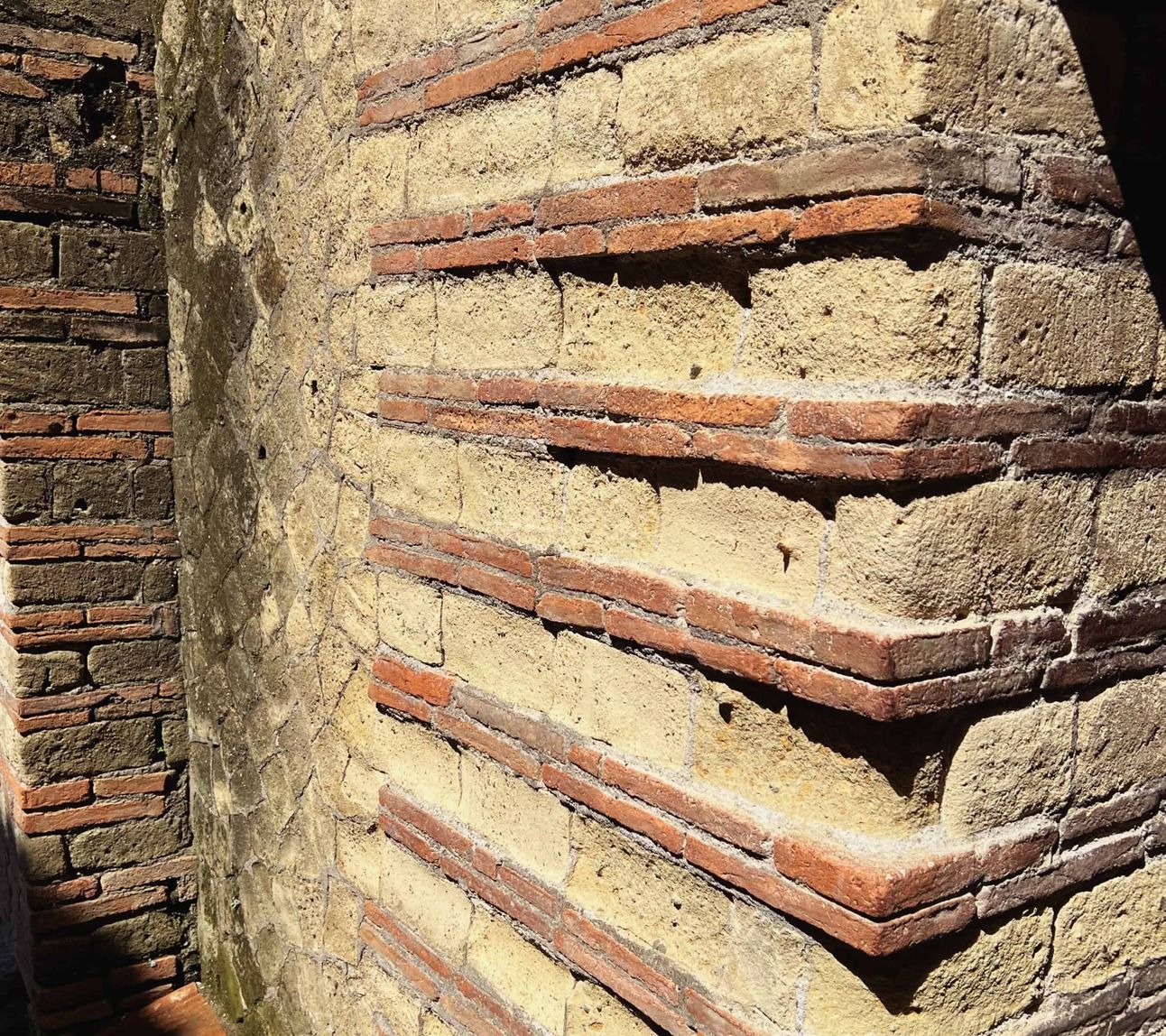
Ancient stripes in Herculaneum, near Pompeii
Ancient Romans pioneered the use of stripes both in a structural sense and as decoration. They alternated bands of different materials to build more quickly and economically. They also exploited the varying colors of natural materials, pioneering the techniques of stone mosaics and inlaid-marble patterns. Later, Byzantine and Islamic architecture would continue the traditions.
All three cultures came together in medieval Italy. Tuscany’s growing prosperity supported a community of artisans who produced increasingly creative fusions of Mediterranean traditions. The maritime empire of Pisa and neighboring Lucca became the epicenter of a new style which covered entire structures in stripes of all kinds.
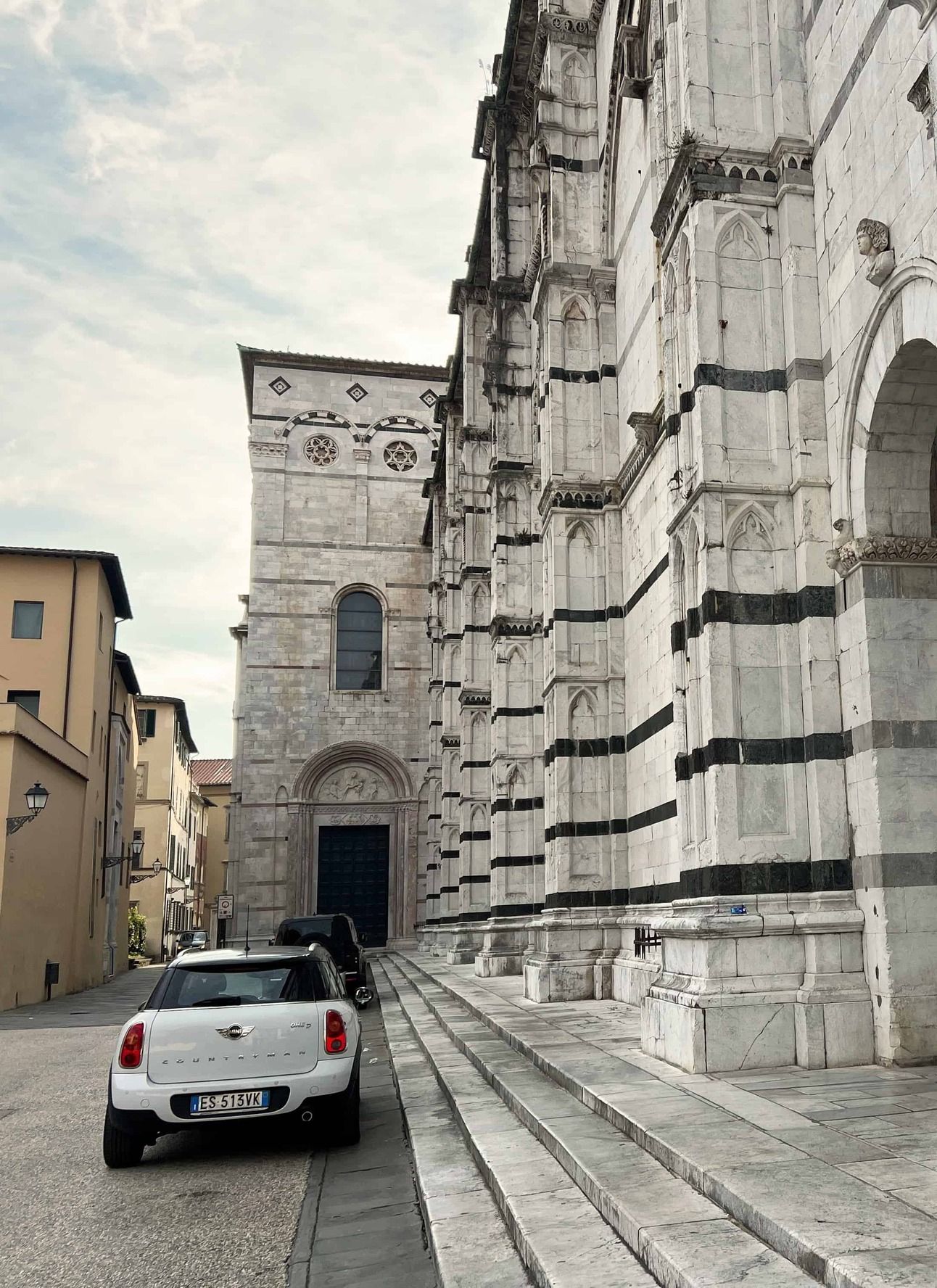 |  |
Although it’s not the oldest example, Pisa’s monumental cathedral complex (begun in 1063) was probably the most influential. Besides an incredible variety of stripes in the main church, the site also includes an enormous Baptistery where strong lines wind endlessly around the round walls and floor.
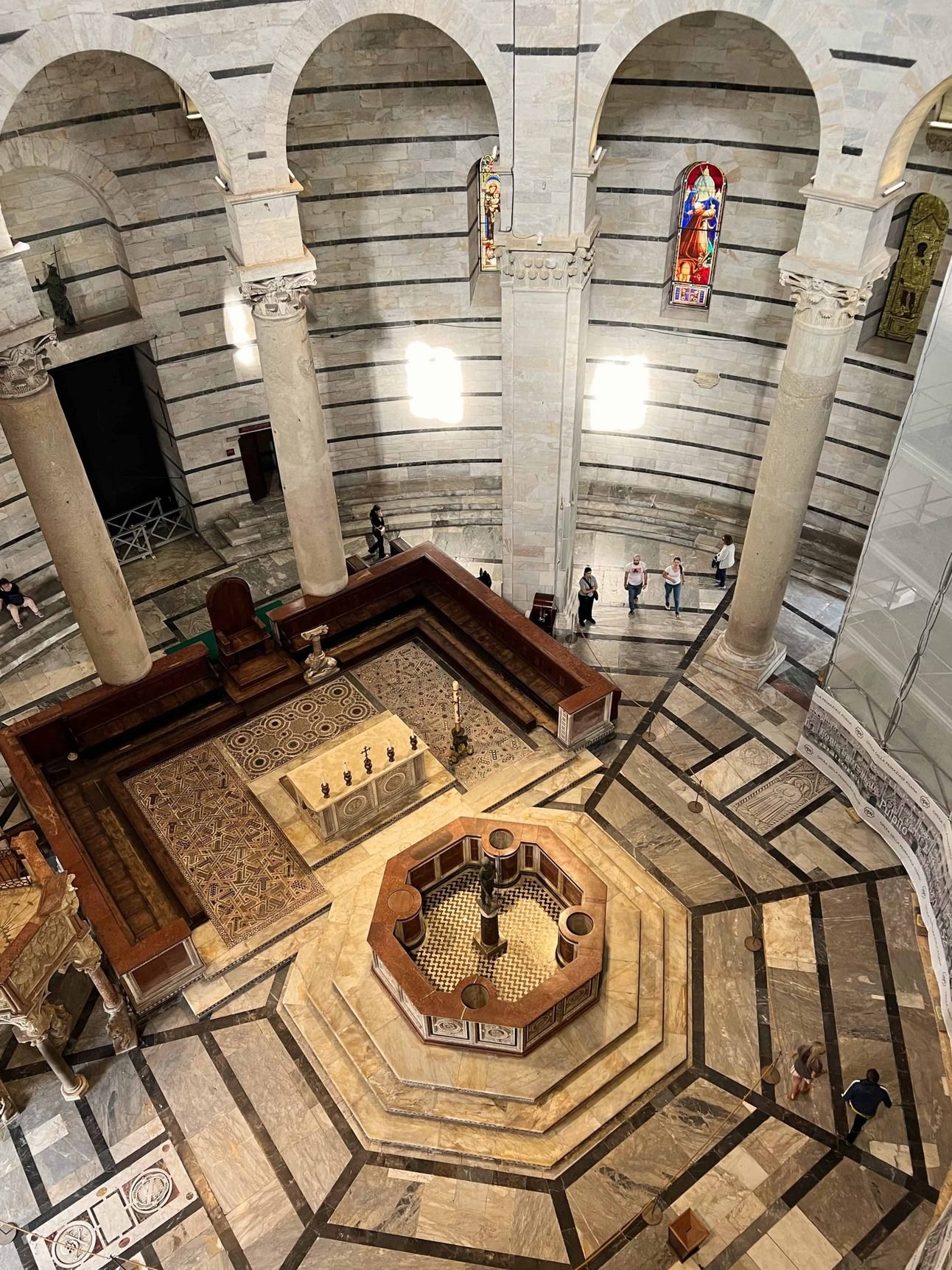 | 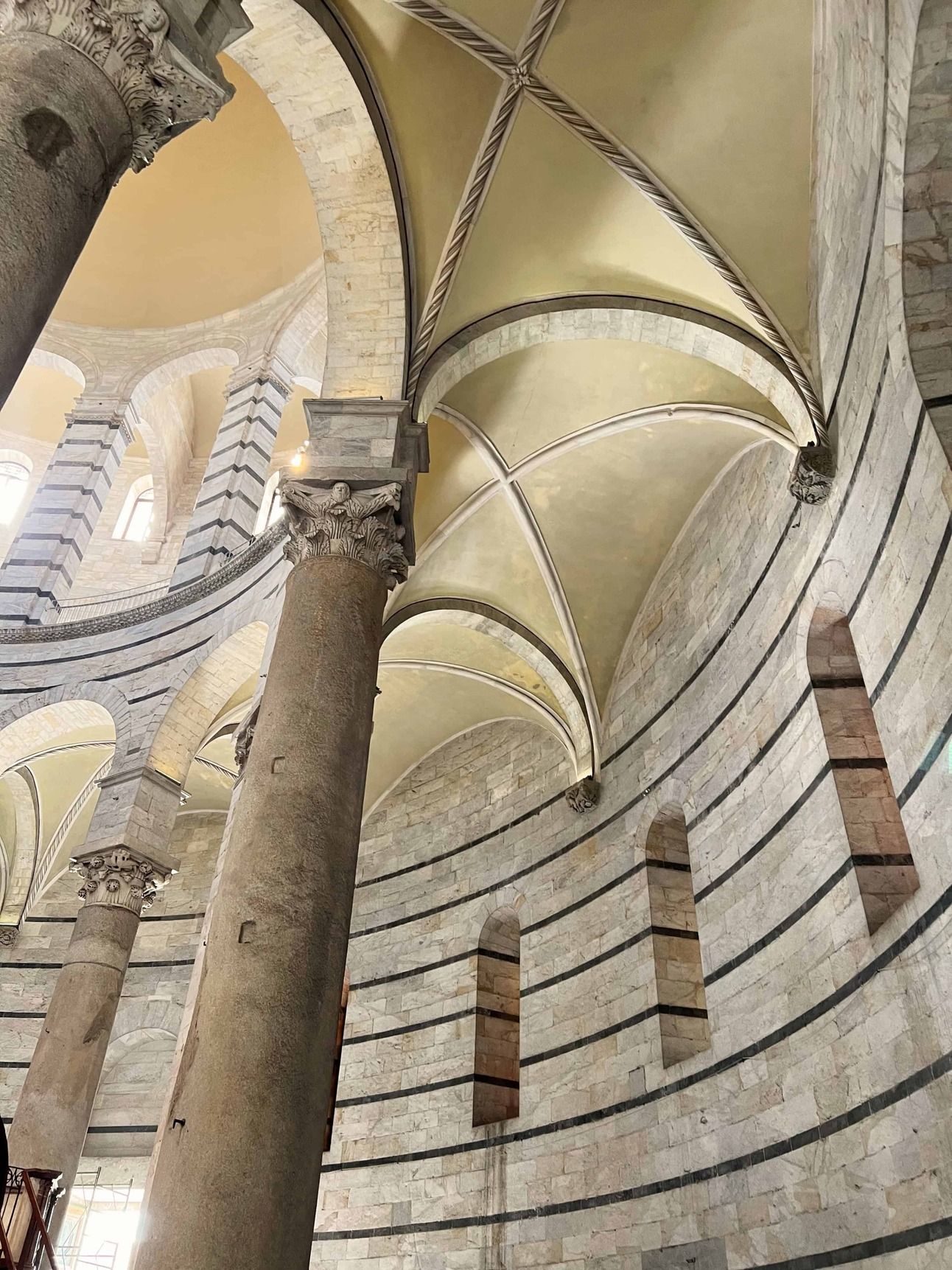 |
Our most recent trip included five nights in Lucca, where striped buildings date back to the ninth century. They seem to be everywhere in the historic center – even across the street from our hotel.
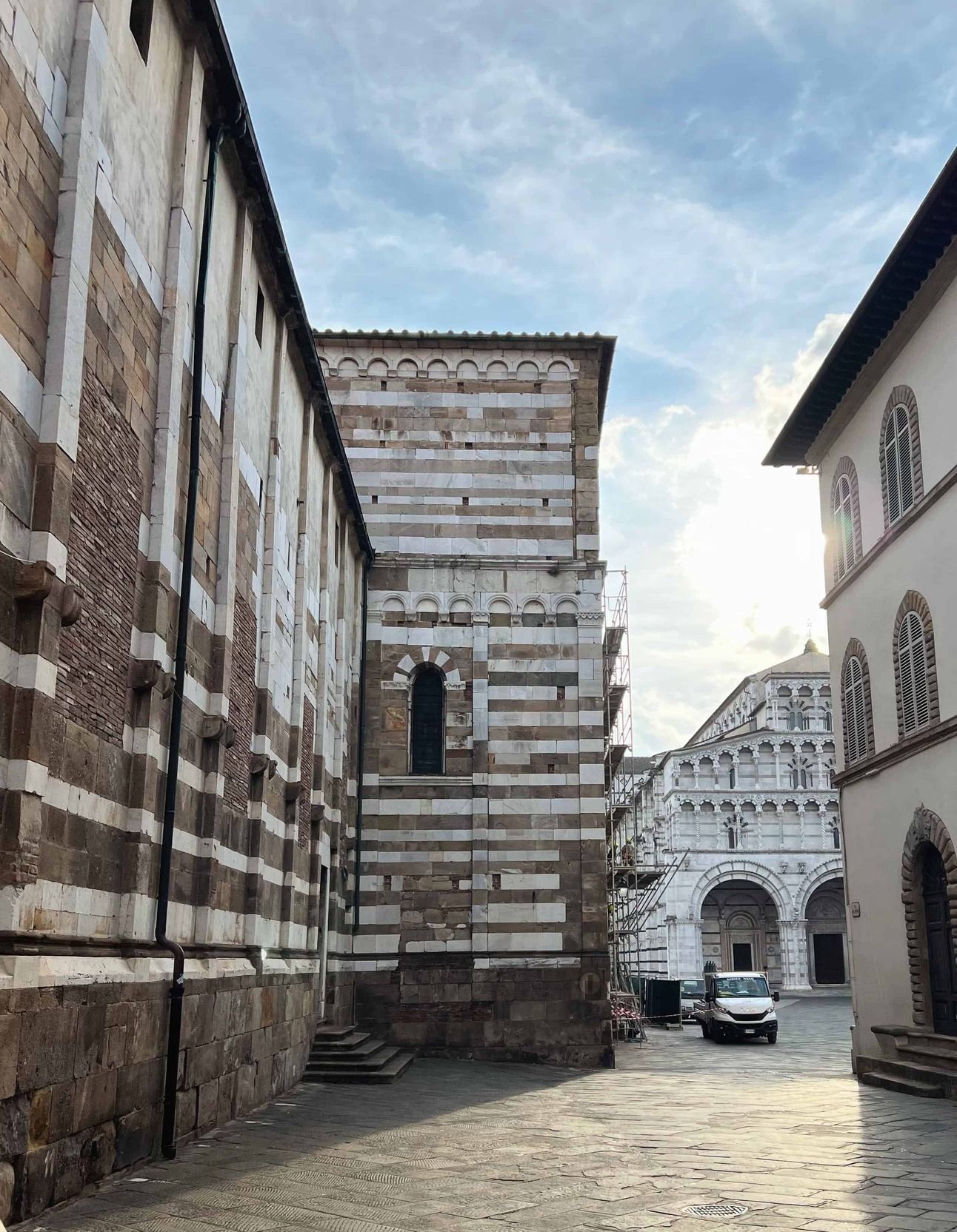 | 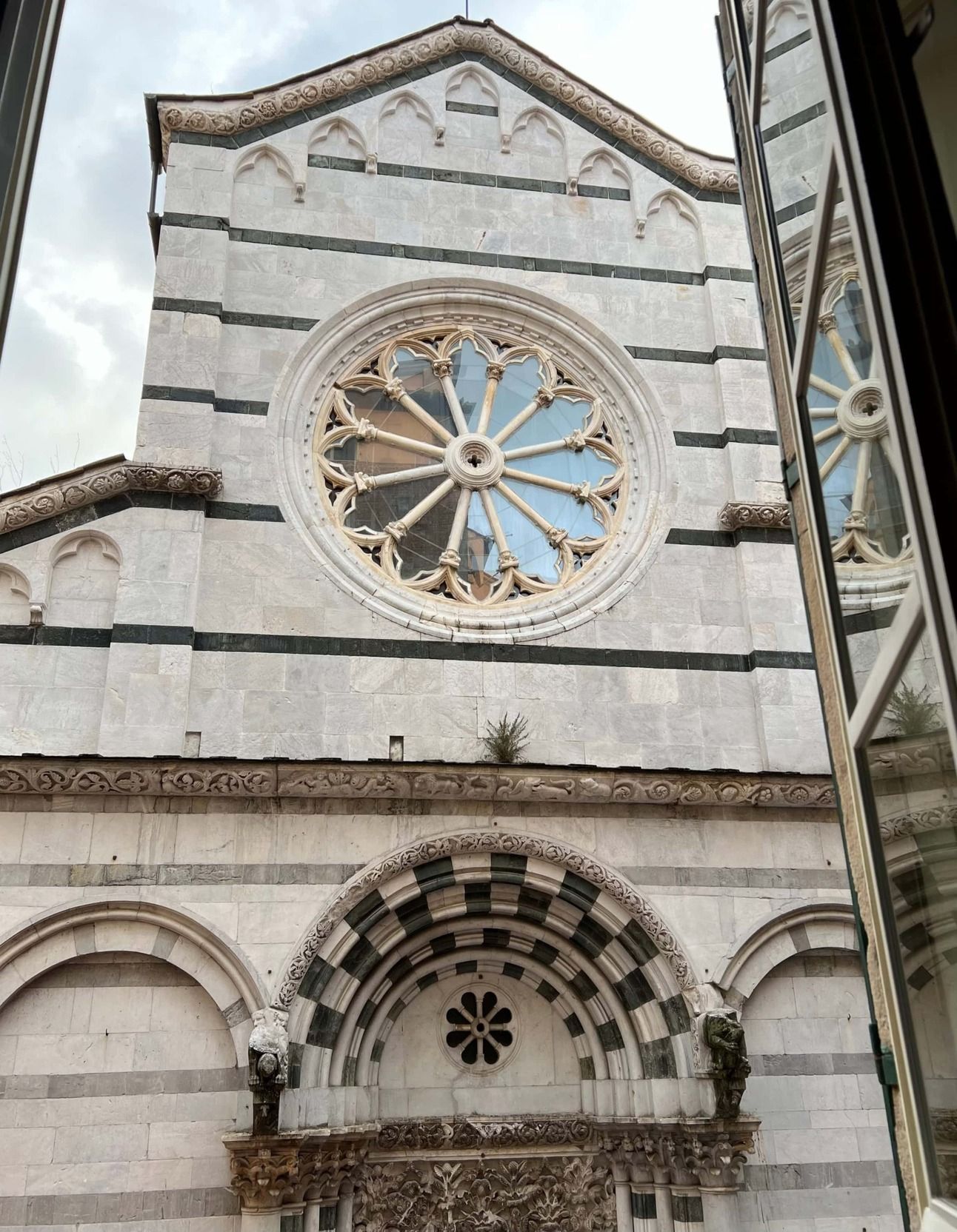 |
We also made a pilgrimage to the town of Pistoia, which has nearly a dozen striped landmarks. Sometimes they seem to spill from one building to the next….
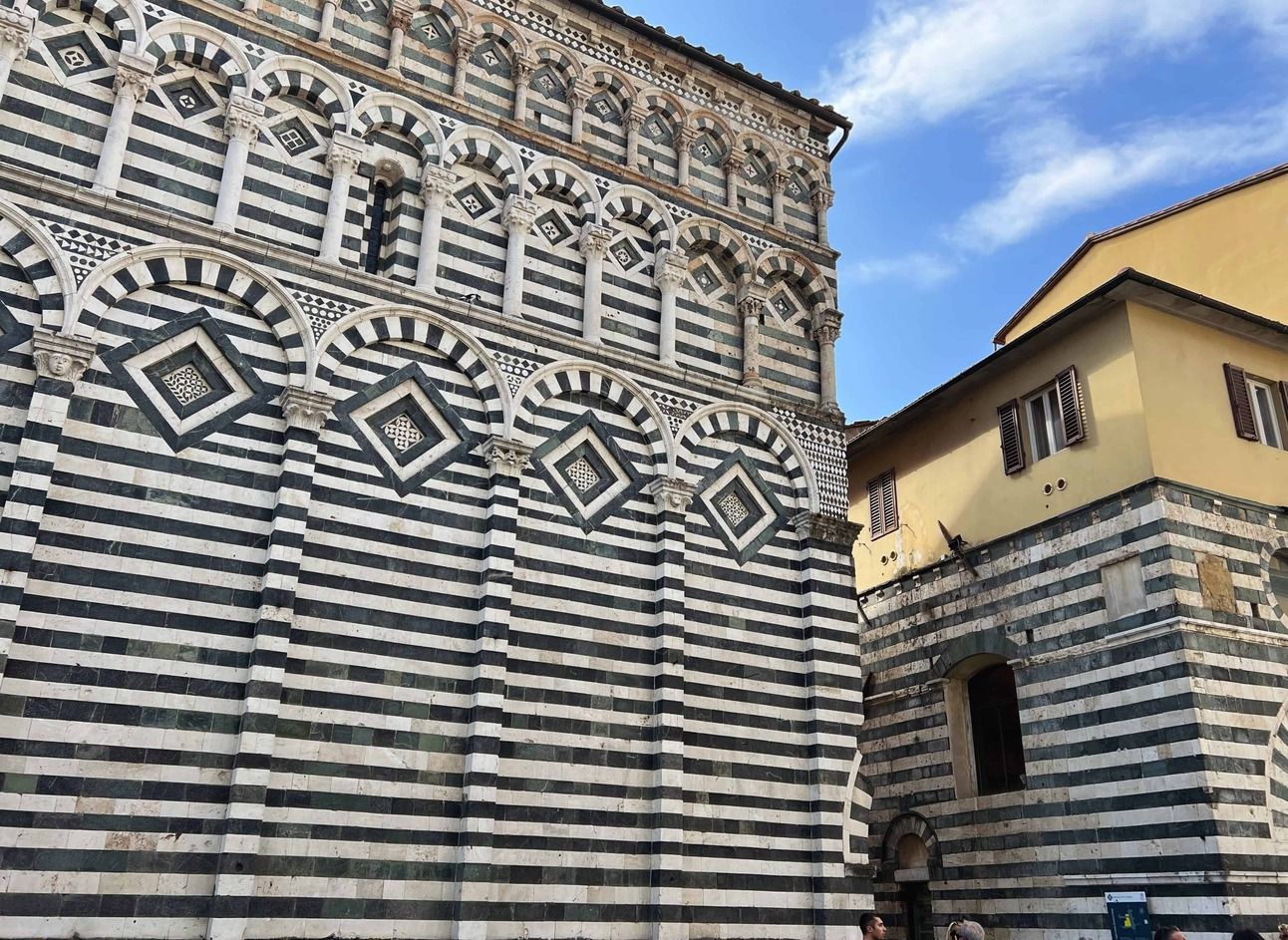
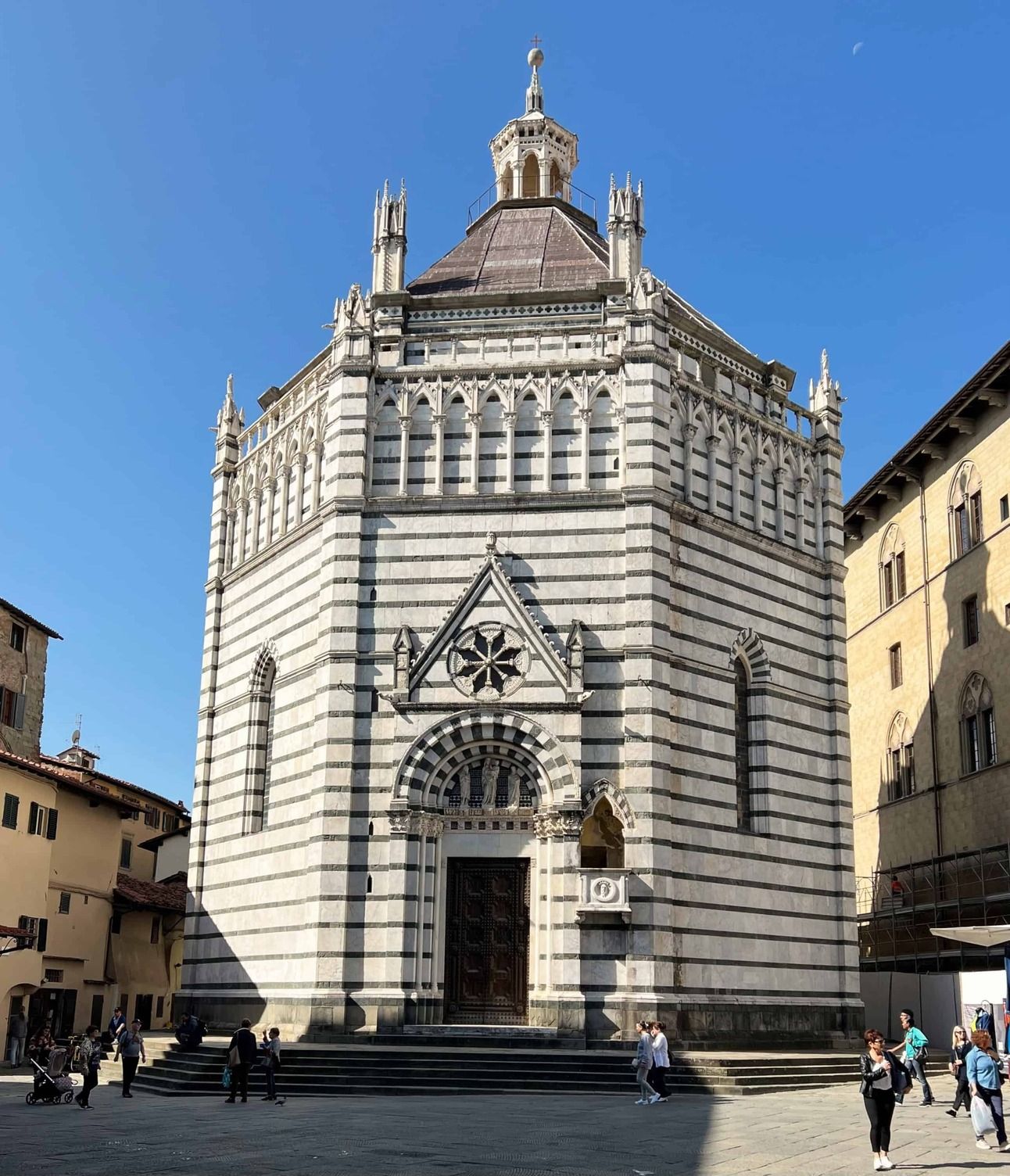 | 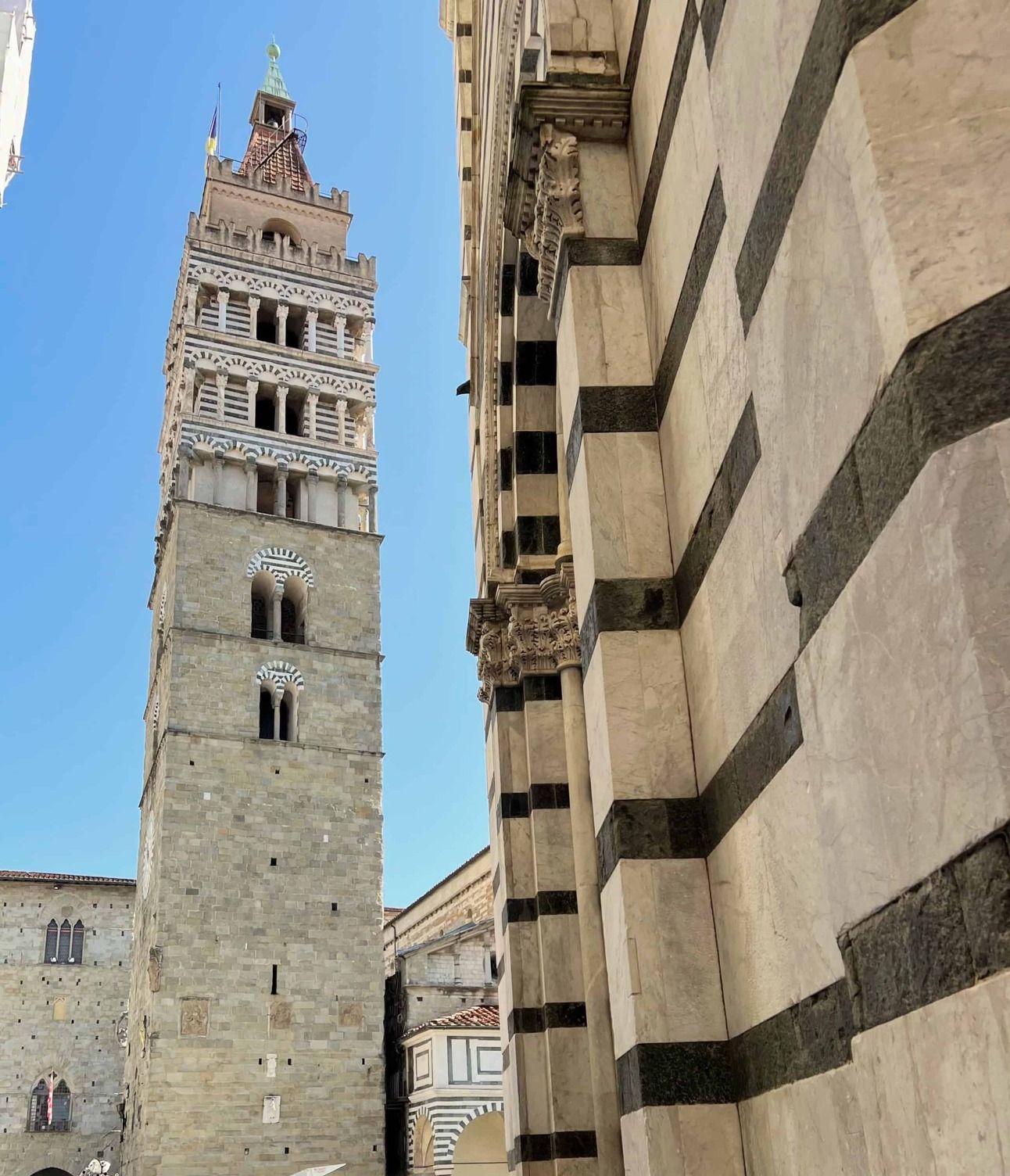 |
Incidentally, all three towns mentioned above see just a fraction of the tourists found in Florence or Siena. In Pisa, no one seems to venture beyond the cathedral complex and leaning tower. Lucca has more visitors than we saw a few years ago, but it still doesn’t draw major crowds (unless it’s Italians on a Sunday afternoon stroll). Pistoia, whose medieval center often stands in for Florence in film and television productions, remains relatively unknown; if there were tourists in town, we didn’t notice them.
Lions in the Piazza News
Based on our travels, we’ve been updating some older posts. Our most recent article covers the towns of Lake Como.
We appreciate your patience as we get this newsletter up and running! Previous editions are posted on our archive page on beehiiv. As always, we welcome questions, comments, and requests.
Mary & Sarah